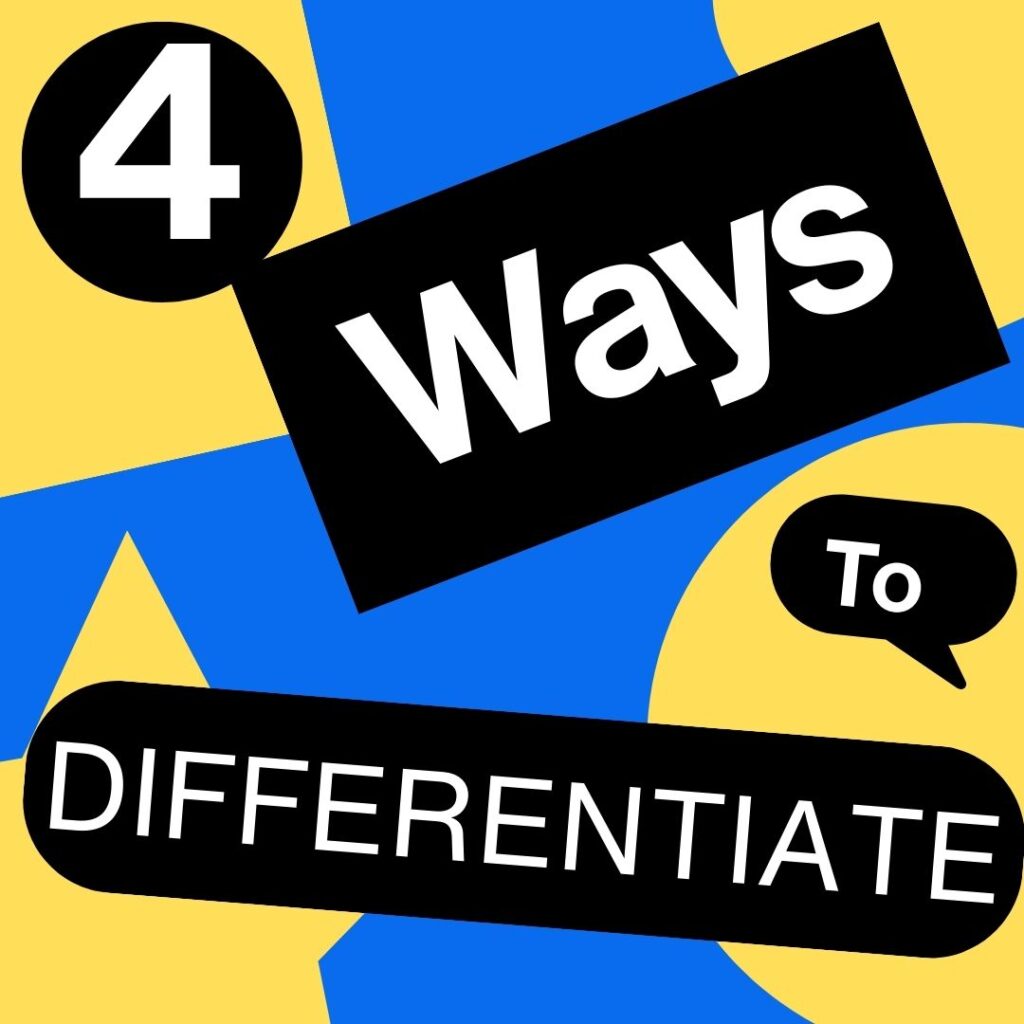Hello Teachers!

Differentiating instruction for our English learners is the magical key to unlocking their true potential, and it’s a journey that promises both challenges and incredible rewards. Weaving a tapestry of inclusive education, where every student thrives, can seem like an epic feat. Here are 4 ways to differentiate instruction for ELS to use for student engagement and individualized support. By seamlessly blending curriculum content, fostering deeper comprehension, and sprinkling in enrichment opportunities, you’ll keep your ELs actively learning while embracing their unique strengths. Let’s embark on this enchanting adventure together, so your English learners can soar to new heights of learning and discovery! 🌟📚
4 ways to differentiate instruction for ELS
1. Differentiate Instructional Strategies

Along with modification, you can utilize a variety of instructional strategies to reach students with different learning styles. Incorporate visual aids, hands-on activities, group work, technology tools, and cooperative learning strategies. New teachers can also vary the pace of instruction and provide additional explanations or demonstrations for struggling learners. Finally, encourage higher-level thinking for advanced learners. You can also try songs and chants for some extra variation.
2. Provide Individualized Support
Offer individualized support to students who require additional assistance or enrichment. This can be done through one-on-one conferences, personalized check-ins, or targeted interventions. New teachers can also identify specific learning goals for each student and provide differentiated resources, feedback, and guidance to help them progress.
3. Utilize Technology… differentiate instruction for ELS
Undoubtedly, you can take advantage of educational technology tools that offer adaptive learning experiences. These tools can adjust content and difficulty levels based on individual student performance as well as provide personalized instruction. New teachers can also incorporate online resources, educational apps, or learning management systems to support differentiated instruction.
4. Collaboration and Professional Development
Finally, engage in collaboration with colleagues, attend professional development sessions, and seek mentorship to enhance your understanding and implementation of differentiated instruction. Networking with experienced teachers and sharing ideas can provide valuable insights and resources.
Remember that differentiation requires ongoing assessment, reflection, and adjustment. Nevertheless, as a new teacher, be open to feedback and monitor student progress. Also, make modifications as necessary to ensure that all students are appropriately challenged and supported in their learning journey.

Suggested Resources:
- “The Differentiated Instruction Book of Lists” by Jenifer Fox and Whitney Hoffman: This resource provides a wide range of practical ideas, tips, and strategies for differentiating instruction. It includes lists of strategies for differentiating based on learning preferences, interests, readiness, and student profiles.
- ASCD: The Association for Supervision and Curriculum Development (ASCD) offers numerous resources on differentiated instruction. Their website provides access to articles, books, professional development webinars, and other tools related to differentiation. Explore their resources on Differentiated Instruction and the ASCD Inservice blog for practical ideas and insights.
- TeachingChannel: TeachingChannel is an online platform that offers a vast collection of classroom videos showcasing effective teaching practices, including differentiated instruction. Search for videos and resources related to differentiation to see practical examples and gain inspiration.
- Fun to Teach: This blog has tons of great tips and strategies for learning to differentiate instruction for your English learners.
On a final note
Investing in our English Learners is an important part of their educational rights and learning how to modify instruction accordingly will provide them with the appropriate differentiated resources for language development that is necessary for achievement. So, let’s start putting these ideas into action!
Sound off in the comments below or follow me on social media to join the conversation about how you differentiate instruction for your English Learner students. I would love to hear from you as we strive towards creating better learning opportunities for all students.
Let’s teach!
Lori

Looking for time-saving tips and tricks for teaching math and ESL? Sign up for my email newsletter to get free teaching resources and helpful strategies right in your inbox! Click here to sign up.

No comments:
Post a Comment